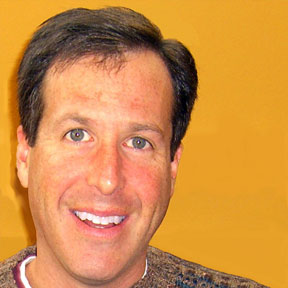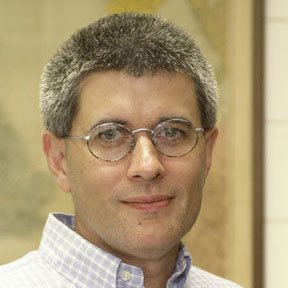Aside from the technical challenges of moving museums online, there’s the cultural challenge of squaring the curator’s focus on the actual, authentic object with the free-for-all, non-hierarchical nature of the web. That’s the tension addressed in the feature story on this episode, a follow-up to concerns expressed at the Smithsonian 2.0 conference. We’re lucky to be joined in the discussion by Sharon Leon, Director of Public Projects at the Center for History and New Media. In the news roundup, we assemble our own stimulus package, talk about Creative Commons on the White House website, look at the impact of Gmail going offline, and debate a possible change to Wikipedia’s moderation policy. Picks include a new grant, Omeka training, museum awards, and (despite protests by Mills) a Twitter client.
Links mentioned on the podcast:
Broadband, Computers Part of Stimulus Package
Wikipedia Co-Founder Calls for Major New Moderation Policy
New White House Copyright Policy
Smithsonian 2.0
National Postal Museum’s Arago website
Best of the Web at the Museums and the Web 2009 meeting
Digging into Data Challenge
TweetDeck
Omeka Workshops
Gmail Goes Offline
Running time: 45:14
Download the mp3

 Follow us on Twitter
Follow us on Twitter


 Mills Kelly
Mills Kelly


Fritz : 3rd February, 2009
Gmail: Sure, Gears might be of some use… but how does it make it better than just using Thunderbird (or Outlook, etc.) with your gmail account? I always backup my e-mails that way and can create drafts when online.
Wikipedia: FlaggedRevs is the name of the MediaWiki plugin which does all of this. It can be used for good or for bad. I’m an admin on Wikipedia and we’ve been discussing this for a while. The current proposal is to have the default version be the “sighted” one rather than the current version. That’s a bad idea in my opinion. What FlaggedRevs needs to be used for is to mark featured and good articles to make sure their quality doesn’t deteriorate. The current version should always be default (unless you change that in your account) but it should give you the option of seeing the checked version… and not just checked for vandalism but community agreed upon standards in general so that you will know the level of an article (Featured, Class A, Good, Class B, Start, Stub). This should be used to make sure article quality doesn’t deteriorate (which is often a problem on more obscure subjects).
Lisa : 3rd February, 2009
As a museum professional (not a curator), working at a small museum on a University campus, I found the one man’s comments a bit insulting, as though he accuses all museum professionals of being completely stuck in the past, incapable of embracing digitization and new technological advances, and being elitist in our attitudes. He mocks museums, saying they don’t want “normal” people adding information to their precious catalogues, and rightly points out that there are knowledgeable enthusiasts that know a lot about a particular subject. I agree completely, but I consider one of these knowledgeable enthusiasts to be an “expert”, even if they don’t have a PhD in the topic. There is a big difference between that person and someone with little to no knowledge contributing possibly incorrect information.
This comment is already epic, so I won’t go into the massive budget and time constraints that seem to be the real impediment, in my experience, to doing all these things everyone wants done.
Museum Blogging » Smithsonian 2.0 : 4th February, 2009
[…] learn more about the tensions expressed and explored at the event by listening to Episode 37 of Digital Campus, which, among other topics, takes a look at “the cultural challenge of squaring the […]
Adam Crymble : 5th February, 2009
Mills mentioned that NEH funding doesn’t outwardly look like a stimulus because it doesn’t create jobs.
I have a full time job in Canada entirely funded by our equivalent arts research funding body. It’s kept me contributing to the economy and routinely leads to research finds that are freely distributed to everyone and anyone.
However, that funding is only accessible to professors and the jobs from the funding can only be created by professors. My experience with arts and humanities professors is that they generally consider themselves researchers first and educators second. I’ve met very few who would consider themselves small business operators, even though they may employ several people to do research or administration.
Until they start thinking of their research as a small business, and a potential to provide jobs, the stigma that arts funding is not an economic stimulus will endure.
Amanda L. French, Ph.D. » Blog Archive » Twitter, institutions, historians, audiences : 5th February, 2009
[…] by an unnamed attendee at the Smithsonian 2.0 meeting. You can hear the incident discussed in the latest episode of the Digital Campus podcast: someone (a curator?) worried about this anti-intellectual bent when […]
Liz M. C. S. : 15th February, 2009
I really enjoyed this episode – these are issues that museums and libraries are really struggling with (how to maintain quality/vetted information while letting in the rest of the community). I think a big problem is that it’s hard to be a pioneer on these things: if something doesn’t work, it’s hard to back up, skeptics will rejoice in the failure, and funding bodies may be shy about new projects.
Also, not to open up an affirmative action debate on the Digital Campus, but I believe this is the first time you’ve had a woman on your show? And it’s one of the few shows when you’ve focused on the museum world specifically? I can’t think of an episode that focused more on the library world, or an episode that included the voice of a librarian. I think as you continue this show and find yourself returning to issues that have come up before, it will be important to make sure to include new voices.
j trant : 17th February, 2009
i found the discussion of the smithsonian 2.0 initiative a bit overly generalized here. just as you can’t take what one professor says at GMU as the voice of the professoriate, it’s not really sound to say that one curator speaks for ‘The Smithsonian’, or that a single event at one institution speaks for ‘museums’ as a whole.
as background, can i point you to one small part of the puzzle: there are over 1,300+ papers on museums and the web and museum interactive technology — representing discussions from 1991 on — freely available online from http://conference.archimuse.com/researchForum
the papers from Museums and the Web 1997 include one by Peter Walsh that should be required reading: “The Web and the Unassailable Voice” http://www.archimuse.com/mw97/speak/walsh.htm it took on the questions of authority and authenticity over a dozen years ago.
we’ll also have all the papers that will be presented at Museums and the Web 2009 on-line before the meeting: since we believe strongly that conferences are about conversations, not about reading papers. maybe you could join us? see http://www.archimuse.com/mw2009/ for details.
/jt
Matt : 25th March, 2009
Thanks for a great podcast – just listened to it (sorry for the late, and long, comment). It’s true that the Web 2.0 “revolution” is sparking lots of interesting discussion in museums about the potential impact on curatorial authority and changing relationships with the audience. Unfortunately for those of us whose job it is to strategically grapple with these issues, glib prounouncements such as Chris Anderson’s about “just opening it up” to the crowd tend to raise the hackles of our credentialed experts whose cooperation and participation we need to do this right.
The story Dan tells about his conversation with Brent Glass (director of the National Museum of American History, where I work) is instructive. He’s right that the social/intergenerational element of museumgoing is important and helps visitors engage with the material. Fortunately there are an increasing number of good tools out there to facilitate social learning online. What is left unsaid, however, is the fact that when you overhear groups of museum visitors discussing the exhibits, the amount of misinformation being passed around is pretty staggering. It’s almost a sport around here to share the latest funny thing heard on the floor. (At one time near my office there was a glass crystal reproduction of the Capitol – a sort of strange object, actually, but popular – and if I had a nickel for every time a parent pulled their kids over to take a look at the glass “White House,” I could retire early.)
I say this not to disparage our visitors, but just to underscore my firm agreement with the point some of you made that, while museums can certainly welcome and make room for contributions from anyone (after all, most museums conceive of their collections as “belonging” to the constitutents they serve, and in the Smithsonian’s case it’s almost literally true), I do think it’s pretty important to make clear who/what are the sources of information that appears in connection with our name. We also have an obligation to continue to use our expertise to provide the best quality of information that we can to hopefully inform these discussions. And so far, feedback from our audience indicates that these things are important to them as well. So while the Postal Museum folks may not have anything to lose by adding functionality to their Arago program that welcomes feedback from anyone with an interest in stamps, I also think it’s appropriate for them to call out content from contributors who have proved their creds as well as clearly indicate what is the work of museum staff.
We have experimented with this a bit on our own site – for example, providing a clearly-marked space on our online collection records for visitor comments (see for example http://americanhistory.si.edu/collections/object.cfm?key=35&objkey=22). We’ve collected some pretty interesting feedback, which we publish without any implied endorsement. Sometimes responses are posted (see http://americanhistory.si.edu/collections/object.cfm?key=35&objkey=193). We are also opening up a conversation on our blog to engage our audience in the larger philosophical issues about the role of museums in the 2.0 age (see http://blog.americanhistory.si.edu/osaycanyousee/2009/03/the-future-of-digital-history.html) I invite you to join our conversation there!
Twitter, institutions, historians, audiences : Archives and Public History Digital : 21st September, 2009
[…] by an unnamed attendee at the Smithsonian 2.0 meeting. You can hear the incident discussed in the latest episode of the Digital Campus podcast: someone (a curator?) worried about this anti-intellectual bent when […]
Productive Distraction: Some Smart Podcasts for Thesis Writers | Gnovis Journal : 8th August, 2011
[…] research and museum curation. If you want a 15 minute sample of Digital Campus at its best, check out Episode 37, skip to the 20:15 marker, and enjoy a fantastic discussion of the recent Smithsonian 2.0 […]